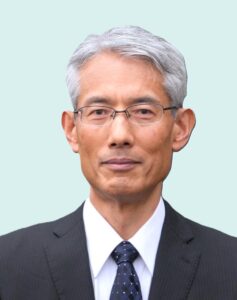President's Message
Keywords are “to communicate,” ”to connect,” and “to nature,” to be the academic society of choice

Japan Atomic Energy Agency
Considering the global trend toward carbon neutrality and the sense of crisis regarding stable energy supplies in light of the current international situation, many countries are turning to expand the use of nuclear energy along with renewable energy. In Japan, the so-called "GX Promotion Act" was enacted in the last year, and discussions on the next Strategic Energy Plan started in this year. The situation surrounding nuclear energy is changing dramatically. Moreover, nuclear science and technology not only serves as an energy source, but also brings various values to society through the use of radiation and radioisotopes, and it is expected that its use will expand in non-energy fields such as medicine, industry, agriculture, and academia.
On the other hand, the use of nuclear energy also faces challenges such as safety, nuclear security, nuclear non-proliferation, and radioactive waste, and it is true that it is a developing technology, including the problems of social acceptance caused by these challenges. In particular, in Japan, it is necessary to steadily proceed with recovery and reconstruction from the accident at the Fukushima Daiichi Nuclear Power Plant of Tokyo Electric Power Company, while constantly working to improve safety based on the lessons learned from the accident, and this is an issue that we must tackle seriously over the long term.
Thus, nuclear science and technology is a field that supports the basis of the nation, and while it has great potential, it also has challenges to overcome. The Atomic Energy Society of Japan (hereinafter referred to as AESJ) has many members from universities, research institutes, industries, etc., and is characterized by its ability to hold academically fair, impartial, and open discussions. It is expected that diverse members will deepen their discussions while competing with each other, tackle common challenges, and find new possibilities., thereby contributing to the welfare and prosperity of human society and the promotion of academics through nuclear science and technology. As I take on the role of the president of AESJ, considering the current situation and the role of AESJ described above, I would like to proceed with the operation of AESJ with three keywords in mind: "to communicate," "to connect," and "to nurture."
The first is "to communicate," or strengthening the dissemination of information. AESJ has a variety of branches, committees, subcommittees, and advisory committees that are active and have produced many results, but our ability to communicate to public has been weak. I believe that effectively disseminating these results to public is extremely important to increase the value of AESJ. Specifically, by making use of social networking services (SNS) and active press releases, I would like to communicate the appeal of nuclear science and technology and our efforts to solve problems.
The second is "to connect," or promoting cooperation inside AESJ and with other academic societies. Nuclear science and technology would rather be an applied field that is deeply rooted in various basic science and engineering fields such as physics, chemistry, mechanical engineering, materials engineering, and so on, and might be affected by Galapagos syndrome if it deviates from these basic and fundamental fields. It is also necessary to incorporate cutting-edge science and technology such as computational science and robotics, and to promote interdisciplinary cooperation is important to create innovation. Conversely, it is also necessary to expand our cutting-edge technology cultivated in the process of solving problems in nuclear technology to other fields and industries. From this perspective, I believe that it is necessary for AESJ to activate cooperation among subcommittees and communication with other academic societies to mutually tackle common challenges. I would like to encourage the members to exchange and disseminate information through various existing channels at first.
The third is "to nurture," or contributing to human resource development. It goes without saying that human resource development in nuclear energy is important, but I am afraid that nuclear science and technology, and our AESJ, are not regarded by young scientists and engineers as very attractive place of growth. Looking at the poster sessions by students at recent annual and fall meetings, on the other hand, the quality of their presentations is remarkable. In addition, each branch and subcommittee is also conducting opportunities for young researchers to make presentations. By encouraging such efforts and communicating our activities to tackle challenges and new technologies, I would like to promote the value of AESJ as an academic society that grows together with young people.
The most important point is eventually the active dissemination of information, with the goal of making AESJ the "Academic Society of Choice" as a trusted source of information for public people, as an important partner for other academic societies, and as a place of growth for young researchers and engineers. I would appreciate members’ cooperation in this endeavor.
- Taku Sato, Atomic Energy Association
- Seiichi Koshizuka, The University of Tokyo
- Tamotsu Kozaki, Hokkaido University
